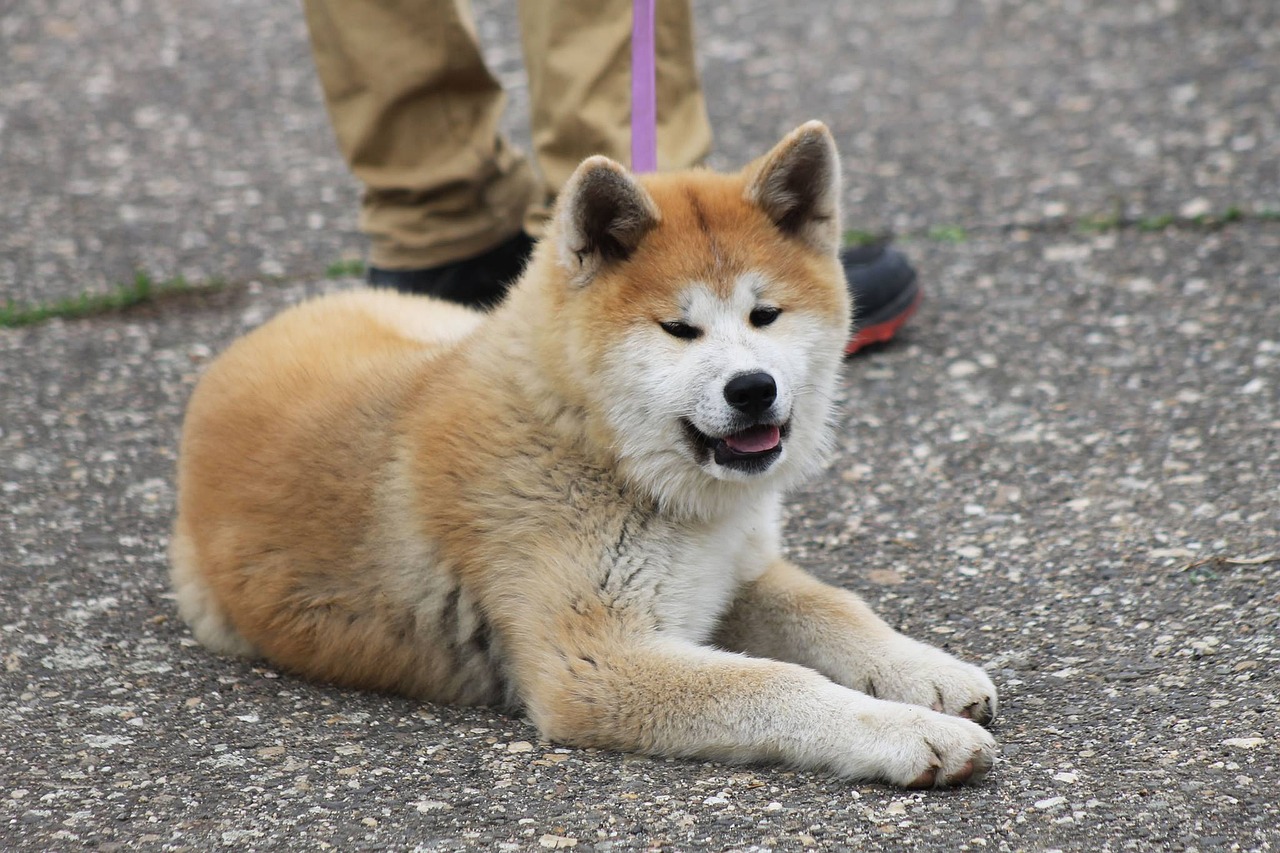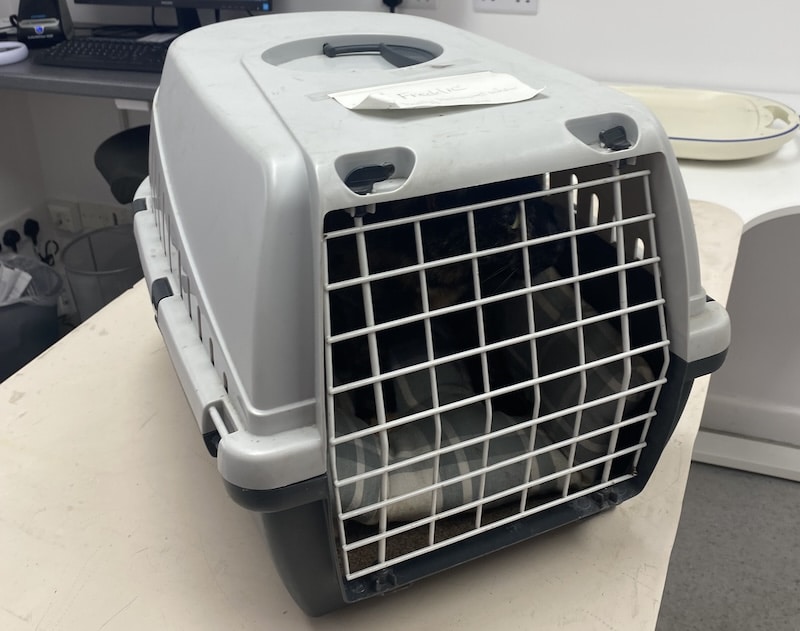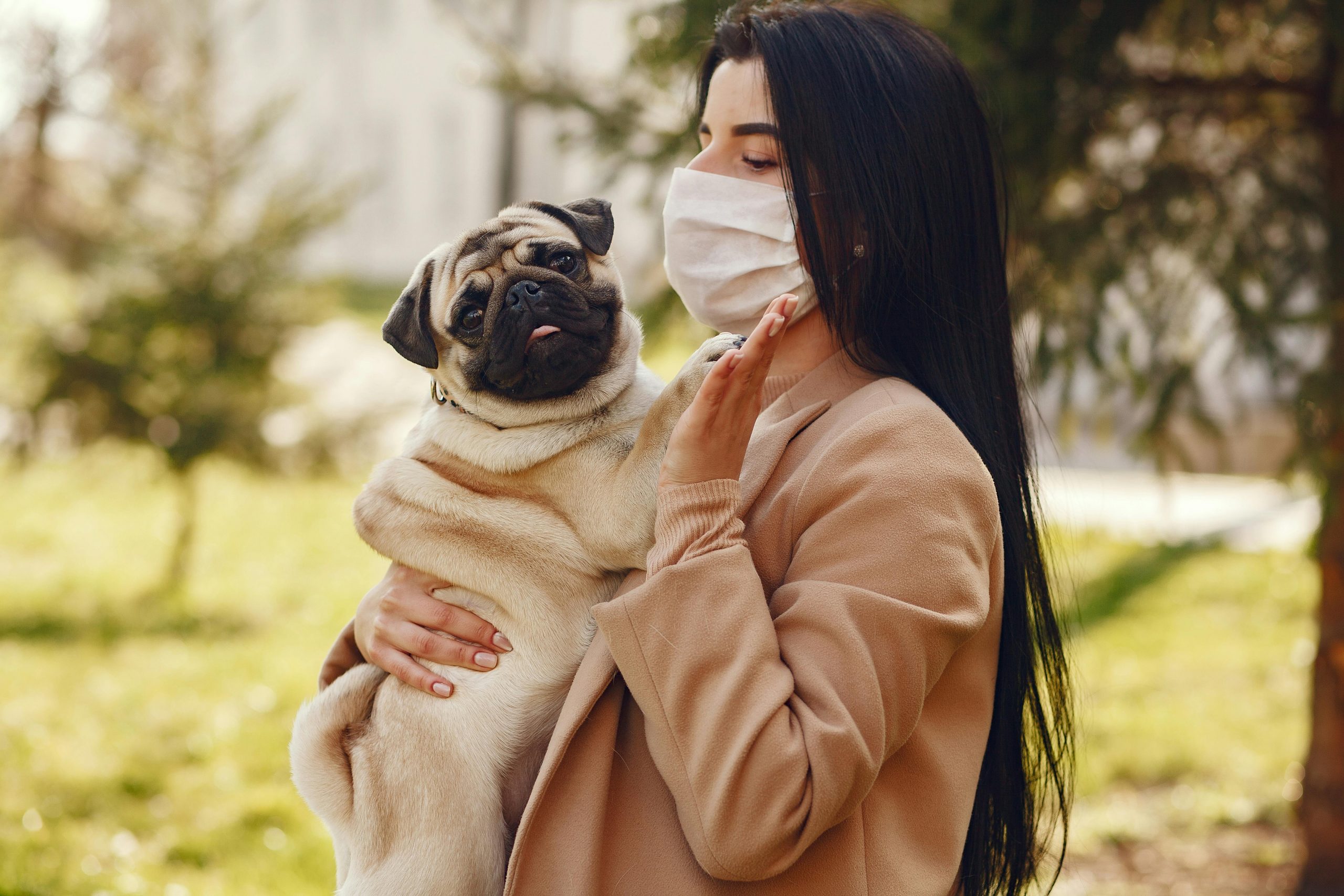
Akitas are a breed revered for their dignity, courage, and loyalty. Originating from Japan, these powerful dogs have a rich history as noble guardians of their families. Known for their imposing stature, profound silence, and an almost cat-like cleanliness, Akitas are both beautiful and formidable. They possess a unique combination of traits, including a strong prey drive, an independent spirit, and a profound loyalty to their family, setting them apart from many other breeds. While Akitas hold a special place in the hearts of their admirers, there are other breeds with similar characteristics that potential dog owners might consider. Each of the breeds discussed below shares some of the Akita’s most cherished attributes, whether it’s their physical prowess, their reserved nature, or their unwavering loyalty, providing alternatives for those seeking a companion with such noble qualities.
1. Shiba Inu
Shiba Inus, often considered a smaller cousin of the Akita, share the same Japanese heritage and many similar traits. They are known for their spirited personality, independence, and fox-like appearance. Shibas are smaller than Akitas, making them more adaptable to various living situations, including apartments. However, like Akitas, they possess a strong sense of loyalty and can be reserved around strangers. Their intelligence and alertness make them excellent watchdogs, although they tend to be more vocal than Akitas. Shibas also share the Akita’s clean habits, often grooming themselves meticulously.
2. Alaskan Malamute
Alaskan Malamutes are powerful, sturdy dogs bred for their strength and endurance to haul heavy freight as sled dogs. They share the Akita’s large, imposing stature and possess a thick double coat that protects them in cold environments. Malamutes are known for their friendly and outgoing nature, differing from the Akita’s more reserved demeanor. However, they exhibit a similar level of loyalty and protective instinct towards their families. These dogs require ample exercise and mental stimulation to stay happy and healthy, paralleling the Akita’s need for physical activity.
3. Siberian Husky
Siberian Huskies, like Akitas, are known for their endurance and ability to work in cold climates. While smaller and more sociable than Akitas, Huskies share the spitz breed’s characteristic appearance, including erect ears and a curled tail. Huskies are highly energetic and possess an independent streak, but they are generally more adaptable and friendly with both humans and other dogs. Their striking eyes and beautiful coat patterns, along with their playful and mischievous nature, make them a popular choice for families looking for an active and engaging pet.
4. Samoyed
Samoyeds are known for their stunning white coat, smiling expression, and friendly, gentle disposition. They share the spitz family traits with Akitas, including a thick double coat and a tail that curls over the back. Samoyeds are less reserved than Akitas, known for their affectionate nature and love of human companionship. They are strong, with a history of herding and pulling sleds, but they are more sociable and less dominant than Akitas, making them suitable for families with children and other pets.
5. Chow Chow
Chow Chows are an ancient breed known for their lion-like mane and distinctive blue-black tongue. They share the Akita’s aloofness and dignity, as well as a similar tendency towards independence and territorial behavior. Chow Chows are less active than Akitas, but they require a firm, experienced owner to manage their dominant personality traits. Their loyalty is usually reserved for one or two family members, and they can be protective of their home and family.
6. Tibetan Mastiff
The Tibetan Mastiff is a powerful and imposing breed, known for its protective nature and independence. These dogs share the Akita’s guardian instincts, with a strong will and a reserved demeanor towards strangers. Tibetan Mastiffs are nocturnal by nature, often patrolling their territory at night. They require a secure environment and an owner who understands the needs of a large, dominant breed. Their thick, double coat and majestic presence make them both a deterrent to intruders and a loyal companion to their families.
7. Leonberger
Leonbergers are giant breed dogs known for their lion-like appearance and gentle temperament. They share the Akita’s strength and presence but are more outgoing and sociable. Leonbergers are versatile working dogs, capable of performing water rescue, therapy work, and even pulling carts. Their friendly nature makes them excellent family pets, although they require ample space to accommodate their large size. Leonbergers are devoted to their families and gentle with children, making them a less reserved alternative to the Akita.
8. Bernese Mountain Dog
Bernese Mountain Dogs are large, working dogs known for their gentle temperament, striking tricolor coat, and loyalty. They share the Akita’s strength and work ethic but are more sociable and less independent. Bernese Mountain Dogs were bred for draft work and possess a natural inclination to protect their family. They are affectionate and patient, making them excellent companions for children. Their need for human companionship and moderate exercise aligns with the Akita’s, though they are generally more adaptable to various living situations.
9. Great Pyrenees
Great Pyrenees dogs are known for their calm demeanor, impressive size, and protective nature. They share the Akita’s guardian instincts, often serving as livestock guardians against predators. Great Pyrenees are independent and reserved, with a strong sense of duty towards their family and territory. They require a confident owner who can provide structure and socialization. Their thick, white coat and gentle presence make them a dignified companion and an effective deterrent against threats.
10. Newfoundland
Newfoundlands are giant breed dogs, renowned for their strength, swimming ability, and sweet disposition. They share the Akita’s impressive size and protective instincts but are more affectionate and less reserved. Newfoundlands are known for their excellent swimming ability and have a history of performing water rescues. Their gentle nature makes them fantastic family pets, although their large size and exercise needs require consideration.
While Akitas are unique in their combination of dignity, loyalty, and independence, several other breeds offer similar traits, ranging from protective instincts to a striking appearance. Whether you’re drawn to the Akita’s guardian nature or their majestic presence, there’s likely a breed that shares some of these admirable qualities. Each of the breeds listed provides a different take on the characteristics that make Akitas so beloved, offering potential dog owners a variety of options to find the perfect companion to fit their lifestyle and preferences.
What Are Akitas Like? How Are They Different Than Other Breeds?

Akitas are a distinguished breed, known for their noble and imposing presence, deep loyalty, and complex personalities. Originating from the mountainous regions of Japan, these dogs have a rich history that has cultivated a unique blend of traits, setting them apart from other dog breeds. This article explores the distinctive characteristics of Akitas, shedding light on what makes them such a special and revered breed.
The Storied History of Akitas
Akitas boast a storied past, initially bred for hunting large game such as bears, boars, and deer in Japan. They are named after the Akita Prefecture, where they were first bred, and have been esteemed companions of Japanese nobility for centuries. This breed was not only prized for its hunting prowess but also for its loyalty and protective nature, serving as guards for royalty and nobility. Unlike many breeds whose roles have dramatically shifted over time, Akitas have retained their noble and dignified demeanor, a testament to their historical significance.
Physical Characteristics
Akitas are large, powerful dogs with a robust build that reflects their history as hunters in rugged terrain. They possess a dense double coat that can come in various colors, including white, brindle, and pinto, offering both warmth in cold climates and a striking appearance. Their broad heads, deep muzzles, and small, erect ears give them a bear-like appearance, while their tails curl over their backs in a graceful arc. Akitas’ physical presence is one of power and elegance, distinguishing them from lighter-framed or less imposing breeds.
Temperament and Behavior
Akitas are renowned for their complex temperament. They exhibit unwavering loyalty to their families, often forming a deep bond with one particular family member. This breed is known for its quiet dignity; they are not excessive barkers but will vocalize when necessary. Their independent nature means they can be aloof with strangers, underscoring the importance of early and consistent socialization. Unlike many breeds that seek constant attention, Akitas are content to be in the presence of their loved ones without the need for ongoing engagement.
Training and Socialization
The Akita’s intelligence and independent streak pose unique challenges and rewards in training. They respond best to firm, consistent training methods that respect their intelligence and autonomy. Early socialization is crucial to help Akitas become well-adjusted adults, comfortable with other dogs and people. This breed’s strong will and protective instincts require an experienced hand to guide them, setting them apart from more easily trained breeds.
Exercise and Activity Needs
Akitas possess a moderate to high energy level, requiring regular exercise to maintain their physical and mental health. They enjoy activities that engage their body and mind, such as long walks, interactive play, and training exercises. Their need for physical activity and mental stimulation is higher than some breeds but manageable for families committed to providing a stimulating environment. Akitas’ adaptability to various exercise forms makes them suitable for a range of lifestyles, provided their basic needs are met.
Health and Lifespan
Akitas are generally healthy but, like all large breeds, are prone to certain genetic conditions, including hip dysplasia, hypothyroidism, and autoimmune diseases. Responsible breeding practices are essential to minimize these risks. With proper care, Akitas typically enjoy a lifespan of 10 to 15 years, requiring regular veterinary check-ups to maintain their health and well-being.
Akitas in Comparison
Akitas stand out from other breeds due to their unique combination of loyalty, dignity, and independence. Unlike breeds that exhibit high levels of extroversion or dependency, Akitas offer a more reserved and self-reliant companionship. Their history as noble guardians is evident in their protective nature, setting them apart from breeds with a more singular focus on work, sport, or companionship.
The Role of Akitas Today
Today, Akitas continue to be cherished as loyal family members and capable guardians. They are suited to families who appreciate the breed’s complex personality and can meet their need for exercise, training, and companionship. Akitas have also found roles as therapy dogs, where their calm presence and loyalty shine. The breed’s adaptability to various roles underscores their intelligence and versatility.
Akitas are a majestic and noble breed, offering a unique blend of loyalty, dignity, and strength. Their storied history as hunters and guardians in Japan has shaped a breed of remarkable character and beauty. While their independent nature and protective instincts may pose challenges, for the right owner, Akitas are unmatched in their devotion and companionship. Their distinct temperament, combined with their physical prowess, sets them apart from other dog breeds, making Akitas a cherished companion for those who understand and respect their profound nature.







